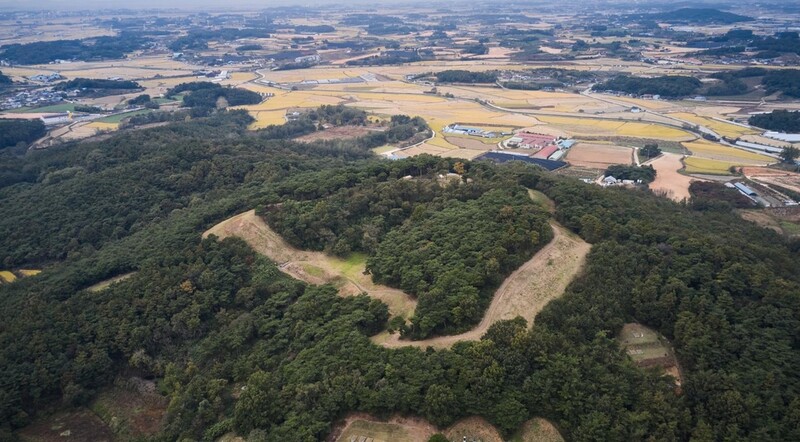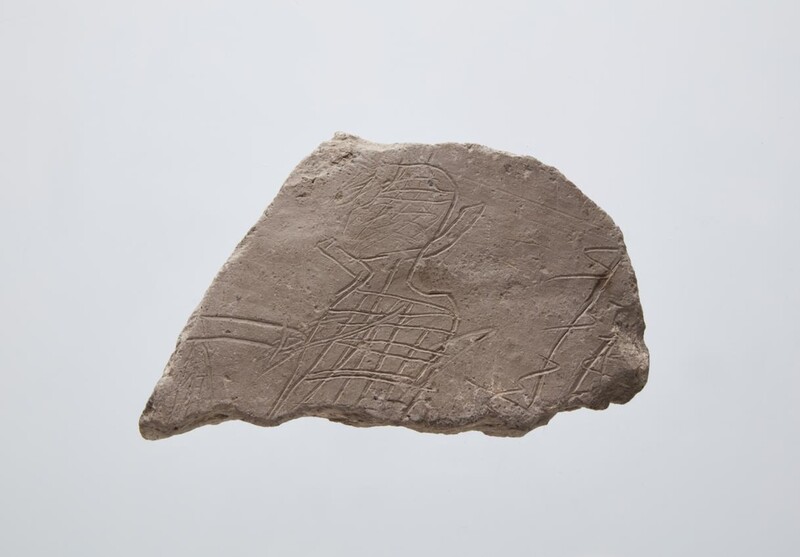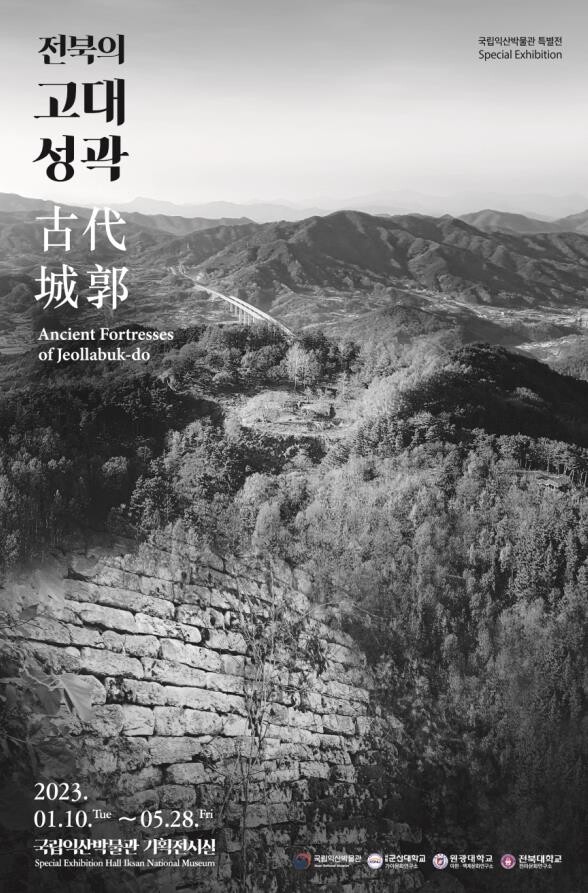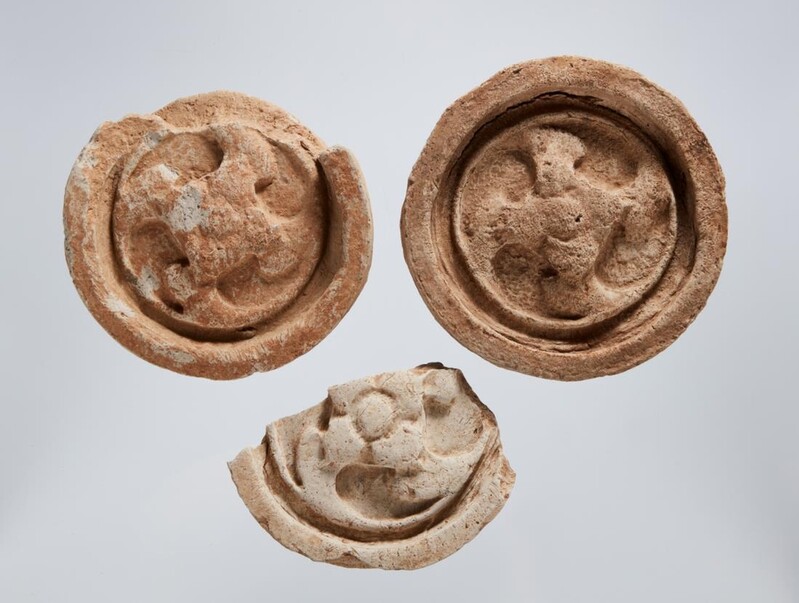 |
| ▲ This photo, provided by Iksan National Museum, shows Iksan Earthen Fortress viewed from the southwest. (PHOTO NOT FOR SALE) (Yonhap) |
▲ This photo, provided by Jeonju National Museum, shows convex roof-end tile. (PHOTO NOT FOR SALE) (Yonhap) |
 |
| ▲ This photo, provided by Jeonju National Museum, cavalryman engraved roof tile . (PHOTO NOT FOR SALE) (Yonhap) |
 |
| ▲ This photo, provided by Iksan National Museum, shows the poster of the exhibition "Ancient Fortresses of Jeollabuk-do." (PHOTO NOT FOR SALE) (Yonhap) |
SEOUL, Jan. 10 (Yonhap) – In the old days, fortresses were built of soil, stone, and wood to protect lives and property from foreign invaders or natural disasters.
The fortress developed in many shapes depending on the geographical conditions. From the fortress built on a low hill to the fortress surrounding the mountain. Currently, about 1,900 fortress ruins remain in the south of the Korean Peninsula.
An exhibition is to be held to highlight the characteristics and historical meaning of ancient fortresses around North Jeolla Province.
Iksan National Museum has announced that it will open a special exhibition of “Ancient Fortresses of Jeollabuk-do,” which explains the characteristics of the old fortress identified in Jeonbuk and brings together 380 related artifacts, on Tuesday.
Several fortress ruins presumed to have been built during the Three Kingdoms Period in Korea remain in North Jeolla Province.
"The vast plain, which was an important base of Baekje's national power, was located in the western part of North Jeolla Province, and Baekje, Gaya, and Silla competed fiercely with each other in the eastern part of North Jeolla Province,” museum official explained.
The exhibition is largely divided into three parts to introduce the fortresses of North Jeolla Province
The first part of the exhibition, "Over the Fence of Time," explains the nature, purpose, and function of the fortress.
Visitors can recall what the fortress looked like at the time by looking at the stones such as Yeoncheon Horogoru Embankment castle stone, Jinan Hapmisanseong fortress stone, and Namwon Amakseong fortress stone, believed to be made during Goguryeo, Baekje, and Silla periods.
Various artifacts excavated from the collecting well, called the "treasure warehouse" of the fortress, and various weapons excavated from the fortress will also be displayed.
In the next "Building History and Culture" section of the exhibition, the ancient fortresses in North Jeolla Province are divided into six areas based on mountain ranges and streams, and each characteristic, research results are examined.
The relics and explanatory materials on display show most of the ancient fortresses were located on the main road leading to the eastern part of North Jeolla Province, centering on Buyeo and Iksan.
It is also notable that these fortresses are counterposed to Silla's fortresses on the border of Baekdudaegan Mountain Range.
Several relics excavated from 25 fortresses fill the exhibition space, including tiles engraved with the appearance of mounted soldiers and a concave roof-end tile.
Based on the research results conducted since the 1960s, this exhibition also pays attention to the historical significance of fortresses in North Jeolla Province.
The UNESCO World Heritage Site, “Archaeological Site in Wanggung-ri, Ikan” can be seen with the surrounding fortress built to defend it and the base castle showing Baekje’s entry into the North Jeolla Province.
It also deals with the latest research results on Amak Fortress in Namwon, which is considered evidence that Baekje and Silla engaged in a heated battle and Wajeong Earthen Fortress in Jinan where a fierce battle with Gaya and Silla in the upper reaches of the Geum River happened.
"Comprehensive investigation and preservation plan is needed since many fortresses are still damaged or have not been investigated. I hope it will serve as an opportunity to recognize the importance of the fortress that is gradually being torn down,” museum official said,
The exhibition ends May 28.
(This article is translated from Korean to English by Yunhee Cho.)
(END)
(C) Yonhap News Agency. All Rights Reserved















![[방송 소식] MBC 대학가요제 13년 만에 부활…26일 방송](https://korean-vibe.com/news/data/20251024/yna1065624915904676_716_thum.jpg)
![[신간] 레넌과 매카트니는 경쟁자였을까…'존 앤드 폴'](https://korean-vibe.com/news/data/20251024/yna1065624915904305_293.jpg)







